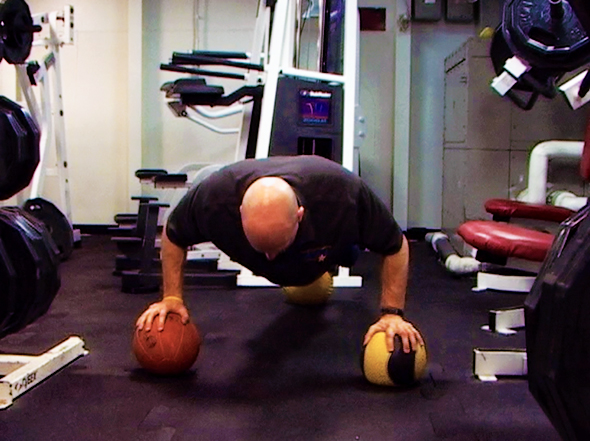Perfecting the Army Physical Fitness Test (APFT)
Written by Randy Behr | March 19th, 2013 | Leave a comment

For those interested in perfecting the Army Physical Fitness Test (APFT), it is fitting to examine what can be done to encourage positive fitness results by using scientifically supported techniques.
First, consult a physician if there is a concern about health.
Second, set a goal for the APFT. More specifically, set a short, medium and long term goal. An example of a short term goal would be “what I want to accomplish this week.” A medium range goal could be approximately a month from the starting date, while the long term would be the actual test. By breaking the goals into smaller increments it will seem more manageable. Also, keep in mind, all goals must be achievable and realistic. It does not do any good to write down an unrealistic goal. When one writes down the final goal he or she must count the days backwards from the test date to the present day. This will allow for the most favorable results.
Don’t deviate. For example, if your goal for the pushups is 100 and initially started at 50 and finished with 90 on test day, this could have been foreseen in one’s training much sooner. Training is a process of breaking up your workout into smaller cycles (micro, meso, etc.), varied intensities, volume, frequency, and duration, to “peak” at the right time.
Once the goals have been written down (where one can see them daily), the next step is to implement the plan.
How many days per week to work out: two times per week, three times per week or maybe a split routine of four days per week and so on? Find a schedule that fits your lifestyle and stick to it. Be sure not to miss workouts.
Resistance training is always beneficial. Lifts for the entire body are recommended with specific attention to the following muscle groups to achieve optimum results for pushups; the chest, rotator cuff, triceps, deltoids, rhomboids, back and—often neglected—the core. For the average Soldier, the core muscles will tire and the back and hips will drop, commonly referred to as the “sway” back.
More importantly, in addition to resistance training, pushups also must be performed. Do not do pushups daily because this will be counterproductive. On a technical aspect, the fingertips and thumb should be spread wide apart to produce more surface area, which ultimately will allow for more power and produce more pushups. They must be performed at many different angles and positions to strengthen all of the muscles used during the evolution.
Also, different types of pushups such as wide, close, diamond, polymeric, medicine ball, incline, slow and one of my favorites, the clock pushup.
Clock pushups consist of assuming a shoulder-width hand position, left hand stationary, while the right hand moves clockwise in an arc motion from one o’clock, two, three, four, five and a six o’clock position. At each clock position, perform the prescribed number of pushups, and then move the right hand the next position. Move onto the opposite hand and repeat. This exercise works the entire shoulder, chest and back regions.
Same thing is true for the curl-ups. Don’t perform a full curl-up every day. In fact, only perform a full curl-up once per week. In my opinion, crunches should only be worked two to four times per week. In fact, crunches are not the most effective exercise to improve core strength. Furthermore, stomach muscles need rest too and one should vary the exercises. Use different variations and equipment such as medicine ball, physioball, upper and lower abs, rotational, cables, etc.
Most people do not realize hip flexors on the average individual will exhaust prior to the abdominal muscles. Therefore, exercises involving strengthening and quickening these muscles are beneficial; such as high knees, adductor and abductor work and dynamic running drills.
The last activity (and many times the most difficult) is the run. To achieve optimal results, one must initially create a base, which means a general conditioning level. This will strengthen the connective tissues and, second, it will allow the individual to speed train properly at the correct intensities without a high risk of injury; it is essential when improving one’s time in a two-mile race. Speed training comes in many different forms – interval, in/outs, speed endurance workouts, downhill running and repeats, to name a few. For a beginner, speed training should occur one to two times per week. A more advanced runner may only want to run once per week. As a general rule, two consecutive “hard” runs shouldn’t be attempted. Always follow up a hard intensity day with a lower intensity or a “slow over distance” run. After the plan is set, it is time to get down to business. This will require motivation and sacrifice. In order to achieve the ultimate goal, one will have to dedicate him or herself to the plan. This will undoubtedly cause one to miss out on things others may be doing, because they are not as motivated. Accept this and use it as motivation.
In closing, remember to include adequate warm-ups prior to taking the APFT, even though the activities are for brief times; warm-ups will pay dividends. In order to achieve a goal, one must sacrifice and omit what doesn’t allow you to achieve that goal!